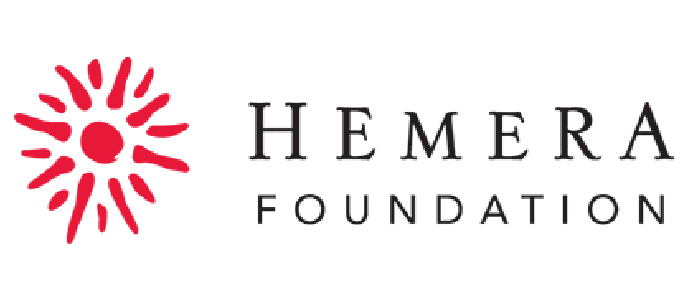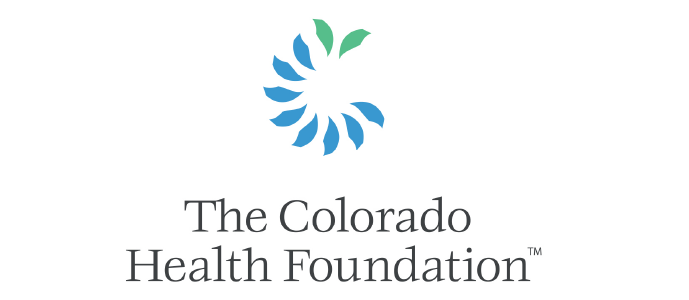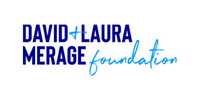This February, RedLine is so excited for the opening of our Reach Program Core Artist Annual Exhibition, "Beyond the Horizon."
The Reach Program is for artists who may be experiencing homelessness, are in transition, or otherwise don’t have a place to make art to access an artistic space, supplies, and support.
In the video below, RedLine's Education Director Tya Alisa Anthony interviews the curators of “Beyond the Horizon”: current Resident Artists Rochelle Johnson and Taiko Chandler.
Watch the video and learn more about Johnson and Chandler's experience curating the show, and what you can expect at this month’s exhibition!
Read the Video Transcription Below
This video audio has been transcribed through a third-party service. Some inaccuracies may be present.
Tya Anthony (00:03):
Hello, everyone. Welcome to RedLine Contemporary Art Center. My name is Tya Anthony, and I'm the director of education and community here at RedLine. And I'd like to welcome you to an interview with artists, Rochelle Johnson and Taiko Chandler.
Tya Anthony (00:21):
Join us in celebrating the work of the Reach Program Core Artists and the opening reception for their annual exhibition, Beyond the Horizon.
Tya Anthony (00:30):
Today, we're joined with Rochelle Johnson and Taiko Chandler, the curators of this amazing exhibit.
Tya Anthony (00:38):
There will be a corresponding Reach Program Exhibition in the community studio from February 4th through February 27th, 2022. Participating artists in the Reach Exhibition are Gonzo, Juannean Young, Xception, Leticia, Lisa, Matt, Myra, Nagy, Melody Epperson, Quantum Keyhole Studio, Rooshieka Leslie, SAM, Tiffany Medina, Vanessa Constanti, and Barbara Johnson.
Tya Anthony (01:13):
... resident artist, Rochelle Johnson and Taiko Chandler takes into consideration the past two years of the pandemic that have profoundly impacted the world. Each artist in this group continue to move forward during these uncertain times. And the artworks created by the Reach Core Artists speak to perseverance that is necessary when chaos becomes reality, and the world simultaneously moves into the future. Artists consider topics such as environmentalism, sustainability, spirituality, and hope.
Tya Anthony (01:53):
The Reach Program is for artists who may be experiencing homelessness or otherwise don't have a place to make art, to access an artistic space, supplies, and support. Reach is an opportunity for socially-engaged artists to collaborate and share ideas in an inclusive community. The goals of Reach are to create a safe, open, and collaborative community space, instructive and non-instructive class time, collaborations and relationships with RedLine resident and community artists, a professional space to display and sell Reach artist work, and post our yearly exhibit for Reach artists in the Core Artist Program within Reach. So today, we have with us, Rochelle Johnson and Taiko. And we will go ahead and get started. Hello, everyone. How are you?
Rochelle Johnson (02:55):
Good. It's good to be here.
Tya Anthony (02:56):
Great. Thank you for joining me for this interview about the current exhibition. Can you tell me a little bit about the exhibit that's coming up and you're curating as a resident artist?
Rochelle Johnson (03:16):
I'll go. I'm very excited to be curating the show with the Reach Core Artists. A little bit about the show is that, out of the pandemic, we spoke to the Core Artists and tried to get an idea where they were at after this past two years. So a lot of them spoke about hopefulness and how they wanted to move beyond where they were at right now. So we came up with some words of what they were feeling at the time. And then, we continued on and talked a little bit about the work that they wanted to create. We chose not to have a theme show outright because we just felt that would be too overreaching, and we wanted them to have a little more freedom to express themselves.
Tya Anthony (04:48):
So the words are being used as a starting point for all the artists, their exploration in the work?
Rochelle Johnson (04:58):
Yes. As a starting point and a way to get some of the trauma, I think, out of the last couple of years out on canvas or out in the world. So the show is about that, those who want to move past the last two years and go beyond into the future.
Tya Anthony (05:29):
Mm-hmm (affirmative). Right. How do we do that? How do we even begin to start to think about what that means and what that looks like for individuals, for communities in general? So it's called Beyond the Horizon. How did everyone come up with that name?
Rochelle Johnson (05:53):
Taiko, I think you should speak on that because she came up with the word beyond.
Taiko Chandler (06:03):
As Rochelle explained, we met with all Reach Core Artists and then just let them speak [what they're thinking]. [There were] keyword in [their statements] like growth, sustainability, and mending the past. Also some artists like spirituality and healing...it’s kind of some key part of what they're thinking. And I saw that because the pandemic is such a...everybody [is] effected [for] different reasons or different situations, and beyond the horizon is more to...how can I say...to really [go forward] to the future, also hope.
Tya Anthony (07:20):
So kind of like, you know, we're, you're thinking about not so much... I mean, we've been in the pandemic for so long now. This is-
Taiko Chandler (07:34):
Yes. And of course, yeah.
Tya Anthony (07:40):
...and, and so let's, oh, it's okay. So it's beginning to, I feel that, you know, it's, it's not becoming, we are not thinking about things that are normal. We're not thinking about going back to the past. How are your artists thinking about the horizon as, as a collective? Is there positive-
Rochelle Johnson (08:05):
I think it's...I think it is positive thinking more on the lines of hopeful thinking, in the sense that they want to exist in the present, but they have their eye on the future as well. You know, I think that they all are making strides to not go back to the old way of thinking or the life that we used to live before the pandemic. And the future is kind of like the unknown, you know, it's, we don't know what is going to happen next. So we are living in the present and taking it day by day and baby steps. So I think it was positive, hopeful, even though there, if you listen to the news, there's always doom and gloom, you know, in, in that scenario. I think most of the, the core artists were very happy to be living in the present and just continuing on without that knowledge of where the future will, what the future will bring.
Taiko Chandler (09:26):
Yeah. I agree [with what] Rochelle said, that and the kind of the making art. Also to the perseverance... making art to [persevere] for the future. And it’s just [a] lot of uncertainty since the pandemic. So there's nothing...how to say...[definite], but still keep going, keep going to the future step by step. Yeah. Very, I think the positive, very positive, whatever circumstance everyone is having.
Tya Anthony (10:06):
So there's a perseverance within the chaos. I see that you make that statement of understanding what reality and you know, is currently, and trying to keep moving forward simultaneously. I really appreciate that, that rhythmic idea. What - as a resident artist of RedLine, why was it important for you to...or what draw drew you to curating this project, participating, collaborating within the core and Reach artists show?
Rochelle Johnson (10:54):
I was approached by Mel Graham and I was really thrilled because I always want to give back and curating is something that I kind of stuck my foot into a couple of years back. And I thought it would be great to not really nurture the reach core artists, because a lot of them already have what they are thinking about and want to their voice. A lot of them have their voice. So just not really nurturing them, but to spotlight them in a way that was just a little bit different because I know in the past they have always created to a theme, but as I said, they, they already have their voice. You know, it's just a matter of letting them use that voice in something that they want to do. So I was, I was really excited.
Tya Anthony (12:08):
And what were some of the words that stuck in your mind when you met with the artists?
Rochelle Johnson (12:20):
Some of the words were, wow... I know what stuck in my mind was not well in so many words, spirituality that was the one that got me because it just really made me think that even though we are going through something that is unprecedented for us at this time, there's still hope still some kind of glimmer of hope for humanity in a way that is kind of intuitive. You don't really think about it at the time, but you always want to persevere and proceed on. And, nobody was like, oh, I just don't think I can make it.
Tya Anthony (13:25):
Everyone was very, they were hopeful. They were at least thinking in the forward direction. I get that.
Rochelle Johnson (13:34):
Yeah.
Tya Anthony (13:37):
Your artist also says, or the career tale statement says 'there are elements of hope within each piece reinforcing the idea that the human spirit continues to evolve'. Do you feel that there is a resurgence of the idea of spirituality, now that you've mentioned that and that kind of stood out in your mind, do you think that viewers and people that have come see the show, will they gravitate toward the spirituality?
Rochelle Johnson (14:17):
I think if they dig a little deep paper and look at the pieces, they will. Not every piece is in your face, hopeful and cheerful and just out there, but there's a similarity in color palette. There's, and to me, color is a big thing because there's always definitions behind the colors that you use. So I think that a lot of the pieces talk about the universe, and spirituality in a way that is not traditional religion per se, but something that they can grab their teeth on and try to continue on. So yes, I do think that every piece has a range or experience that you will get from the piece incorporates hope fullness.
Tya Anthony (15:36):
And are the works sculptural paintings, drawings? What mediums are being...?
Taiko Chandler (15:47):
Many of the works are with painting. And there is a digital installation using, I think animation. And one is, I would say, another installation, like combined in using, I think found material, also she...directly drew on that using the chapel on the wall. Very, I think, very dynamic. Yeah. I don't know, I should say, but she was [in the] neighborhood very close to the Marshall fire. And she had also helped...I think I was told...her house was saved from the fire, but a lot of her friends or close people suffered...so it was a very emotional time before the beginning of this show...she was not thinking because fire wasn't happening, so more like connection nature, but she changed because the unfortunate event that happened.
Taiko Chandler (17:14):
So she won't merge...combine, so pick, that incident, what she feels about it. And then she picked up the charcoal from the fire area. Then she decided to draw on the trees...so it's kind of very strong, powerful. Also as an artist she’s using like a panel, like public pieces, some like maybe thrift shops. Some are the family, father, mothers, belong with peice. Also, she wants to combine something like, for instance, sustainability. She wants to talk about, recycle the youth with so much, all the stuff. And then she haven't seen it yet, but combined like for instance, grocery pack, something like that, all combined and make abstract, kind of, makes the panel all hand stitched also include mending. I think that's kind of how was stitch, mending stitch. Anything else? I think that's all I'll share.
Tya Anthony (18:43):
This sounds like, we're dealing with sustainability, we're dealing with environmentalism. We're dealing with, spiritual, personal connections. You know, there's a lot that's been going on in the world. And then as from the micro, in Denver and Colorado, I feel like this is a great opportunity to bring all those voices together and heal. This is great time.
Experience the “Beyond the Horizon” Reach Exhibition Today
“Beyond the Horizon” will be on display in our Project Space from February 4-27, 2022.





